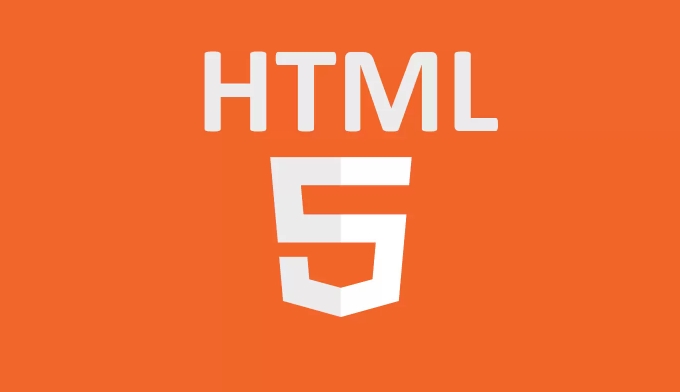 Web Front-end
Web Front-end
 HTML Tutorial
HTML Tutorial
 What is the difference between the disabled and readonly html attributes on form inputs?
What is the difference between the disabled and readonly html attributes on form inputs?
What is the difference between the disabled and readonly html attributes on form inputs?
Jun 27, 2025 am 01:45 AMBoth disabled and readonly restrict form interaction, but the submission behavior is different. 1. Disabled input is not submitted with the form, and the data will not be sent to the server; readonly input will submit the value. 2. The disabled field is usually grayed out and cannot be focused through the tab, while the readonly field looks normal. The user can tab focus but cannot edit it. 3.JS can modify the readonly field value, but cannot change the disabled field. 4. If you need to submit uneditable values ??or update dynamically with JS, you should use readonly; if you need to completely block interaction and submission, you should use disabled.

The disabled and readonly attributes in HTML both restrict user interaction with form inputs, but they behave differently in key ways — especially when it comes to form submission and styling. Here's a practical breakdown of the differences:

1. How They Affect Form Submission
-
disabledinputs are not submitted
When a form is submitted, any input with thedisabledattribute will be completely ignored. The data from that field won't be sent to the server.
readonlyinputs are submitted
Inputs marked asreadonlystill submit their values ??along with the rest of the form. This makesreadonlymore appropriate for fields you want to show but not let users edit.
So if you're building a form where certain values ??should be visible but unchangeable, and still need to be included in the form data, use readonly .

2. User Interaction and Styling
disabledfields usually look grayed out
Browsers typically style disabled inputs with lower opacity or a faded appearance, indicating they're inactive. You can override this with CSS, but the default behavior is clear.readonlyfields usually look normal
Read-only inputs often appear just like regular inputs, which can confuse users unless you add visual cues (like background color or a note) to indicate they can't be edited.
Also:
- Users can tab into
readonlyfields but not intodisabledones. -
readonlyonly apply to<input>and<textarea></textarea>elements;disabledworks on a wider range including buttons and select dropdowns.
3. JavaScript Access and Behavior
You can modify a
readonlyinput with JavaScript
Even though the user can't change areadonlyfield directly, your scripts can still update its value.disabledfields are locked from both user and script changes
While you can enable them again via JavaScript, while disabled, even scripts can't alter their value.
This means:
- Use
readonlyif you want to lock editing but still allow programming updates. - Use
disabledif you want to fully block all changes until some condition is met (like checking a box).
4. When to Use Each One
Here's a quick guide:
Use readonly when:
- You want users to see but not edit a value
- You need the value to be submitted with the form
- You might want to change the value later via JavaScript
Use disabled when:
- You want to prevent any interaction entirely
- You don't want the value submitted
- You're waiting for a condition to be met before allowing input
In short, both attributes lock input fields, but they serve different purposes depending on whether the data needs to be submitted and how you want it to behave in the UI and with scripts.
Basically that's it.
The above is the detailed content of What is the difference between the disabled and readonly html attributes on form inputs?. For more information, please follow other related articles on the PHP Chinese website!

Hot AI Tools

Undress AI Tool
Undress images for free

Undresser.AI Undress
AI-powered app for creating realistic nude photos

AI Clothes Remover
Online AI tool for removing clothes from photos.

Clothoff.io
AI clothes remover

Video Face Swap
Swap faces in any video effortlessly with our completely free AI face swap tool!

Hot Article

Hot Tools

Notepad++7.3.1
Easy-to-use and free code editor

SublimeText3 Chinese version
Chinese version, very easy to use

Zend Studio 13.0.1
Powerful PHP integrated development environment

Dreamweaver CS6
Visual web development tools

SublimeText3 Mac version
God-level code editing software (SublimeText3)
 Applying Semantic Structure with article, section, and aside in HTML
Jul 05, 2025 am 02:03 AM
Applying Semantic Structure with article, section, and aside in HTML
Jul 05, 2025 am 02:03 AM
The rational use of semantic tags in HTML can improve page structure clarity, accessibility and SEO effects. 1. Used for independent content blocks, such as blog posts or comments, it must be self-contained; 2. Used for classification related content, usually including titles, and is suitable for different modules of the page; 3. Used for auxiliary information related to the main content but not core, such as sidebar recommendations or author profiles. In actual development, labels should be combined and other, avoid excessive nesting, keep the structure simple, and verify the rationality of the structure through developer tools.
 Implementing Clickable Buttons Using the HTML button Element
Jul 07, 2025 am 02:31 AM
Implementing Clickable Buttons Using the HTML button Element
Jul 07, 2025 am 02:31 AM
To use HTML button elements to achieve clickable buttons, you must first master its basic usage and common precautions. 1. Create buttons with tags and define behaviors through type attributes (such as button, submit, reset), which is submitted by default; 2. Add interactive functions through JavaScript, which can be written inline or bind event listeners through ID to improve maintenance; 3. Use CSS to customize styles, including background color, border, rounded corners and hover/active status effects to enhance user experience; 4. Pay attention to common problems: make sure that the disabled attribute is not enabled, JS events are correctly bound, layout occlusion, and use the help of developer tools to troubleshoot exceptions. Master this
 Configuring Document Metadata Within the HTML head Element
Jul 09, 2025 am 02:30 AM
Configuring Document Metadata Within the HTML head Element
Jul 09, 2025 am 02:30 AM
Metadata in HTMLhead is crucial for SEO, social sharing, and browser behavior. 1. Set the page title and description, use and keep it concise and unique; 2. Add OpenGraph and Twitter card information to optimize social sharing effects, pay attention to the image size and use debugging tools to test; 3. Define the character set and viewport settings to ensure multi-language support is adapted to the mobile terminal; 4. Optional tags such as author copyright, robots control and canonical prevent duplicate content should also be configured reasonably.
 Best HTML tutorial for beginners in 2025
Jul 08, 2025 am 12:25 AM
Best HTML tutorial for beginners in 2025
Jul 08, 2025 am 12:25 AM
TolearnHTMLin2025,chooseatutorialthatbalanceshands-onpracticewithmodernstandardsandintegratesCSSandJavaScriptbasics.1.Prioritizehands-onlearningwithstep-by-stepprojectslikebuildingapersonalprofileorbloglayout.2.EnsureitcoversmodernHTMLelementssuchas,
 HTML for email templates tutorial
Jul 10, 2025 pm 02:01 PM
HTML for email templates tutorial
Jul 10, 2025 pm 02:01 PM
How to make HTML mail templates with good compatibility? First, you need to build a structure with tables to avoid using div flex or grid layout; secondly, all styles must be inlined and cannot rely on external CSS; then the picture should be added with alt description and use a public URL, and the buttons should be simulated with a table or td with background color; finally, you must test and adjust the details on multiple clients.
 How to associate captions with images or media using the html figure and figcaption elements?
Jul 07, 2025 am 02:30 AM
How to associate captions with images or media using the html figure and figcaption elements?
Jul 07, 2025 am 02:30 AM
Using HTML sums allows for intuitive and semantic clarity to add caption text to images or media. 1. Used to wrap independent media content, such as pictures, videos or code blocks; 2. It is placed as its explanatory text, and can be located above or below the media; 3. They not only improve the clarity of the page structure, but also enhance accessibility and SEO effect; 4. When using it, you should pay attention to avoid abuse, and apply to content that needs to be emphasized and accompanied by description, rather than ordinary decorative pictures; 5. The alt attribute that cannot be ignored, which is different from figcaption; 6. The figcaption is flexible and can be placed at the top or bottom of the figure as needed. Using these two tags correctly helps to build semantic and easy to understand web content.
 What are the most commonly used global attributes in html?
Jul 10, 2025 am 10:58 AM
What are the most commonly used global attributes in html?
Jul 10, 2025 am 10:58 AM
class, id, style, data-, and title are the most commonly used global attributes in HTML. class is used to specify one or more class names to facilitate style setting and JavaScript operations; id provides unique identifiers for elements, suitable for anchor jumps and JavaScript control; style allows for inline styles to be added, suitable for temporary debugging but not recommended for large-scale use; data-properties are used to store custom data, which is convenient for front-end and back-end interaction; title is used to add mouseover prompts, but its style and behavior are limited by the browser. Reasonable selection of these attributes can improve development efficiency and user experience.
 How to handle forms submission in HTML without a server?
Jul 09, 2025 am 01:14 AM
How to handle forms submission in HTML without a server?
Jul 09, 2025 am 01:14 AM
When there is no backend server, HTML form submission can still be processed through front-end technology or third-party services. Specific methods include: 1. Use JavaScript to intercept form submissions to achieve input verification and user feedback, but the data will not be persisted; 2. Use third-party serverless form services such as Formspree to collect data and provide email notification and redirection functions; 3. Use localStorage to store temporary client data, which is suitable for saving user preferences or managing single-page application status, but is not suitable for long-term storage of sensitive information.





